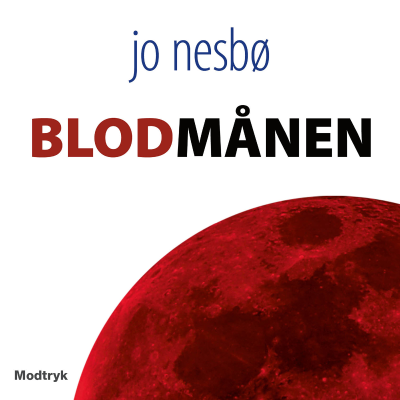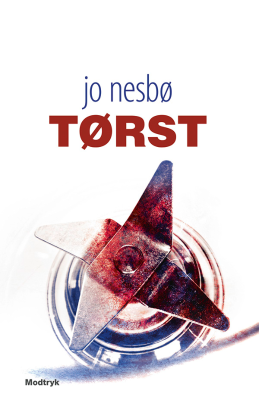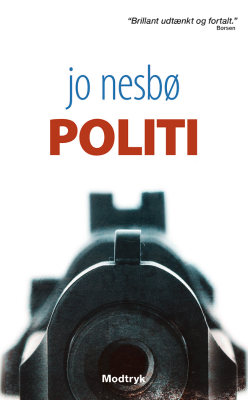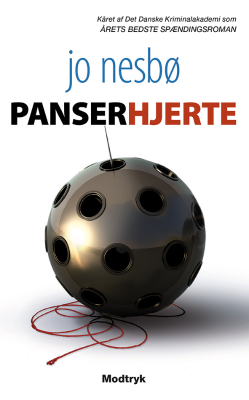
Dr. Lovely’s Couch Cafe’
engelsk
Personlige fortællinger & samtaler
Begrænset tilbud
3 måneder kun 9 kr.
Derefter 99 kr. / månedOpsig når som helst.
- 20 lydbogstimer pr. måned
- Podcasts kun på Podimo
- Gratis podcasts
Læs mere Dr. Lovely’s Couch Cafe’
Welcome to Dr. Lovely's Couch Café a sacred space where thought meets transformation. Journey with me as we challenge cultural norms, confront community dilemmas, and unpack the complexities of Black relationships, family stigmas, and generational dysfunction. This isn't surface-level dialogue; we dive deep into the truths others won't touch. Rooted in a Biblical Hebraic perspective, our conversations blend spiritual insight with systemic critique, offering a lens that restores, provokes, and heals. Whether you're seeking clarity, courage, or connection, this is where revelation begins. ️ Explore the podcast at Dr. Lovely's Couch Café Interested in counseling or therapeutic support? Visit my practice at Roundbell International Services to begin your healing journey. ️ Podcast & Cultural Commentary Hashtags #BlackVoicesMatter #CouchConversations #BiblicalPerspective #UnspokenTruths #CulturalRestoration #BlackRelationships #FamilyHealing #SystemicCritique #HebraicWisdom #TruthTellers Therapy & Healing Hashtags #MentalHealthAwareness #TherapyWorks #EmotionalHealing #GriefSupport #SelfCareJourney #TraumaRecovery #HealingThroughFaith #CounselingSupport #InnerChildHealing #TherapistLife Promotion & Visibility Hashtags #LinkInBio #PodcastPromotion #TherapyOnline #HealingStartsHere #RoundbellInternational #DrLovelysCouchCafe #StartYourHealing #FaithAndHealing #CommunityWellness #VoiceReclamation
Alle episoder
7 episoderThe Mirror of the Heart
OPENING THOUGHT “As water reflects the face, so the heart reflects the person.” This proverb reminds us that the heart is not hidden; it is the mirror of our true identity. Today, we will journey through scripture, ancient language, psychology, and archetypes to understand how reflection reveals wisdom, folly, and destiny. Reflection is not passive; it is active truth-telling. Just as water cannot lie about the face it mirrors, the heart cannot lie about the person it represents. This lesson begins by acknowledging that every heart is a mirror, and the question is: what does it reveal? ---------------------------------------- INTRODUCTORY PRAYER Heavenly Father, We come before You seeking wisdom and clarity. Just as water reflects the face, let our hearts reflect Your truth. Remove vanity, pride, and illusion from within us, and grant us the humility to see ourselves as You see us. May this lesson open our minds to deeper understanding, our spirits to correction, and our lives to restoration. Guide us as we explore Your Word, so that our reflections bring light, not darkness, and our hearts mirror Your wisdom in all we do. Amen. ---------------------------------------- TRANSITION INTO LESSON * After the prayer, you can say: “Now, let us begin by looking at Proverbs 27:19 in its original Hebrew form, and then trace how the mirror archetype unfolds across scripture, psychology, and even myth.” This sets the stage for a journey that moves from the ancient wisdom of Solomon to the psychological mirror effect, the myth of Narcissus, the Hebrew archetypes of the fool, and finally the Bell Curve of comprehension and wisdom. II. BIBLICAL FOUNDATION: THE MIRROR OF THE HEART Proverbs 27:19 says, “As in water face reflects face, so the heart of man reflects the man.” In the ancient world, people saw themselves in calm water, but they also used polished metals like bronze and copper. When water was placed within these vessels, the reflection carried a dual meaning: human craftsmanship meeting divine flow. This created a threshold image between the earthly and the spiritual. In Genesis, water begins as the deep, unformed chaos, yet becomes the womb of creation when the Spirit of God hovers over it. From the beginning, water functions as both boundary and bridge, separating realms while sustaining life. This frames water not only as mirror but as medicine, a space where disorder is shaped into life. In Hebrew tradition, immersion in water (mikveh) embodies purification, rebirth, and alignment with divine order. It draws us toward the good inclination, the yetzer hatov, restoring compassion and integrity. Water's healing is not merely ritual; it is a reorientation of the heart toward wisdom. Water is fluid and flexible, taking the shape of whatever vessel receives it. This mirrors the human soul's adaptability: we are formed by the vessels we choose; wisdom, vanity, humility, or pride. Like floods and streams, the heart can reflect destruction or gentleness depending on its condition. Stillness reveals; disturbance distorts. Looking into water is not just about surface identity; it is soul reflection. It invites us to peer into our vulnerabilities and choose cleansing over concealment. The proverb's claim is uncompromising: the heart cannot hide its imprint. What is within will appear without. PALEO-HEBREW BREAKDOWN AND SYNTHESIS מַּיִם (Mayim — Water): glyphs . Evokes flow, movement, and generative power. It carries the tension of chaos and life-source, the same element that births the world and, in excess, overwhelms it. פָּנִים (Panim — Face): glyphs . Conveys presence and relational identity. The face is the outward imprint of the soul, the meeting point of self and other. לֵב (Lev — Heart): glyphs . Combines staff (authority, guidance) and house (dwelling, interior life). The heart is the inner seat of authority where decisions are conceived and character is formed. אָדָם (Adam — Man): glyphs . Ox (strength), door (threshold, choice), water (life). Humanity stands at the doorway, choosing how life's flow will be guided into wisdom or vanity. Chaos and life source in the glyphs: Mayim anchors the paradox; creation's womb and destruction's flood. This duality mirrors the heart's capacity for both restoration and distortion. How they tie together: Water reflects presence. The face discloses identity. The heart governs and houses authority. Man stands at the threshold where what is reflected becomes lived character. Together, the proverb reveals that reflection is not surface; it is the unveiling of authority, identity, and destiny flowing from the inner dwelling. Teaching point: Just as water cannot lie about the face it reflects, the heart cannot lie about the person it represents. The glyphs themselves carry this wisdom: water as chaos and life, face as presence, heart as authority, man as threshold. Reflection is both physical and spiritual, exposing the soul's vulnerabilities and directing the path toward wisdom or vanity. Application for practice: Honor water's duality; chaos and order, surface and depth, mirror and medicine. Keep the heart still and clear so its reflection reveals restoration rather than distortion. Choose vessels that shape the soul toward wisdom, and let purification be a lived rhythm, not a momentary ritual. III. PSYCHOLOGICAL MIRROR EFFECT AND RELATIONAL ARCHETYPES Proverbs 27:19 frames reflection as a truth-telling force: water reveals the face, the heart reveals the person. Psychology echoes this in self-awareness, social mirroring, and emotional projection. Relationships become living mirrors, revealing the condition of the inner life in ways we cannot hide. Self-awareness • Honesty rises when we face reflection. Seeing ourselves—literally or figuratively—confronts us with the truth of our motives, habits, and character. • Reflection is corrective. It invites course changes toward wisdom, compassion, and integrity. Social mirroring • Humans naturally mirror gestures, tone, and emotional states, creating connection or conflict depending on the heart's condition. • A troubled heart projects tension; a peaceful heart projects calm. Communities reflect their members' inner lives, and individuals absorb community currents in return. Emotional projection • Inner states flow outward in words, posture, and presence. Anxiety or joy cannot be permanently concealed. • The heart, like water, cannot hide its imprint. Disturbance distorts; stillness clarifies. Scripture integration: guarding and holding the heart • Guard the heart in Proverbs 4:23. The inner dwelling of authority must be actively protected because life flows from it. • The heart trusts in the virtuous woman in Proverbs 31:11. This portrays a relational archetype: a heart entrusted, held, and not crushed. Paleo-Hebrew depth for guarding and holding the heart • נצר Natsar — guard, keep Nun: seed, continuity Tsade: pursuit, righteousness Resh: head, authority Meaning: Active vigilance that preserves life-in-motion, pursuing righteousness to protect authority. • לב Lev — heart Lamed: staff, guidance Bet: house, inner dwelling Meaning: The inner dwelling of authority where decisions and character are formed. • בָּטַח Batach — trust Bet: house Tsade: path of righteousness Chet: fence, protection Meaning: Placing the heart inside a protected house, secured by righteous pursuit. • בעל Ba'al — husband Bet: house Ayin: perception, awareness Lamed: authority, guidance Meaning: The one who perceives and guides the house, carrying responsibility. Archetypal synthesis • Individual archetype: The Guardian. One guards the heart as a sacred inner house, maintaining clarity so life's flow remains pure. • Relational archetype: The Steward. The woman holds the man's heart as entrusted vulnerability, protecting rather than crushing, embodying compassionate authority. • Communal archetype: The Mirror. Communities reflect and shape hearts; wise communities calm the waters, unwise ones agitate them. How it ties back to reflection • Guarding the heart clarifies the mirror. When authority within is protected, the outer reflection becomes coherent and trustworthy. • Holding another's heart sanctifies the mirror. Trust creates a protected vessel where reflection can heal rather than harm. • Reflection becomes formation. What is seen in the mirror is not only truth-telling but soul-shaping—guiding the heart toward yetzer hatov, the good inclination. Application • Practice vigilant inner guarding: daily stillness, honest reflection, and boundary-setting that preserves the heart's authority. • Practice relational stewardship: hold entrusted hearts gently, creating a house of protection where trust can flourish. • Shape communal waters: cultivate environments that calm rather than distort, so mirrors tell the truth and nurture wisdom. IV. MYTH ARCHETYPES: NARCISSUS AND SACRED REFLECTION Greek myth offers a cautionary mirror to the biblical wisdom of reflection. The story of Narcissus shows water as both lure and lesson: a surface that can reveal truth or trap us in illusion, depending on the heart's posture. Narcissus at the water • Image fixation: Narcissus bends over a pool, captivated by his own reflection, unable to turn away. • Surface obsession: The water's mirror becomes a prison; the appearance of self eclipses the substance of self. • End in barrenness: His life withers into the flower that bears his name, symbolizing beauty without rooted wisdom. Contrast with sacred reflection • Vanity vs. truth: Narcissus seeks admiration; biblical reflection seeks alignment. One consumes the self; the other refines the self. • Disturbance vs. stillness: In vanity, the heart agitates the waters; in wisdom, the heart calms them so reflection tells the truth. • Isolation vs. communion: Narcissus gazes alone; sacred mirrors are communal—priests at the laver, the mikveh, trust within covenant. Vanity vs. Truth הֶבֶל (Hevel – Vanity) Glyphs: • He: window, breath, revelation • Bet: house, dwelling • Lamed: staff, authority, guidance Meaning: Vanity is a breath in the house, a fleeting vapor without substance. It is authority misdirected toward emptiness. אֱמֶת (Emet – Truth) Glyphs: • Aleph: ox, strength, divine source • Mem: water, flow, life • Tav: mark, covenant, completion Meaning: Truth is strength flowing into covenant. It is substance, alignment, and completion. Contrast: Vanity consumes the self like vapor; truth refines the self by anchoring strength in covenant. ---------------------------------------- Disturbance vs. Stillness רָעַשׁ (Ra'ash – Disturbance, shaking) Glyphs: • Resh: head, authority • Ayin: eye, perception • Shin: teeth, fire, consuming force Meaning: Disturbance is authority consumed by perception and fire, agitation that unsettles the waters. שָׁלוֹם (Shalom – Stillness, peace) Glyphs: • Shin: teeth, fire, consuming force • Lamed: staff, guidance • Mem: water, flow, life Meaning: Stillness is fire guided by authority, flowing into life. Peace is not absence of force but force rightly guided. Contrast: Disturbance agitates the waters so reflection distorts; stillness calms the waters so reflection clarifies. ---------------------------------------- Isolation vs. Communion בָּדָד (Badad – Isolation) Glyphs: • Bet: house • Dalet: door, pathway Meaning: Isolation is a house with a closed door, a path cut off. בְּרִית (Berit – Covenant, communion) Glyphs: • Bet: house • Resh: head, authority • Yod: hand, divine spark • Tav: mark, covenant Meaning: Communion is a house where authority and divine spark are sealed in covenant. Contrast: Isolation closes the door; communion opens the house into covenant trust. ---------------------------------------- Good Inclination vs. Evil Inclination יֵצֶר הַטוֹב (Yetzer Hatov – Good inclination) Glyphs: יצר טוב • י Yod: hand, divine spark • צ Tsade: path, pursuit of righteousness • ר Resh: head, authority • ט Tet: basket, contained goodness • ו Vav: hook, connection • ב Bet: house, dwelling Meaning: The good inclination is the divine spark guiding authority along the path of righteousness, containing goodness within the house. יֵצֶר הָרַע (Yetzer Hara – Evil inclination) Glyphs: יצר רע • י Yod: hand, divine spark • צ Tsade: path, pursuit • ר Resh: head, authority • ר Resh: head, authority again • ע Ayin: eye, perception, desire Meaning: The evil inclination is authority misdirected, the divine spark consumed by perception and desire, leading to distortion. Contrast: The good inclination aligns the heart with wisdom and covenant; the evil inclination agitates the waters, distorting reflection into vanity. ---------------------------------------- Teaching Synthesis Vanity is vapor; truth is covenant. Disturbance agitates; stillness clarifies. Isolation closes the door; communion opens the house. The good inclination guides authority into wisdom; the evil inclination distorts authority into desire. Together, these Paleo-Hebrew insights show that reflection is not neutral; it is shaped by the condition of the heart. The waters reveal whether we are aligned with covenant truth or consumed by vanity. Water's dual role • Portal: Water can open a threshold to self-knowledge, healing, and God's presence when used with humility. • Trap: Water can trap the ego in endless self-regard when used for performance and control. Archetypal synthesis • The Seer: Looks into water to discern identity and realign the heart with wisdom. • The Performer: Looks into water to confirm image and inflate the ego's hunger. • The Keeper: Guards the heart and curates vessels (rituals, relationships, communities) that turn reflection into formation, not performance. Integration with earlier sections • Biblical foundation: Water as mirror and medicine invites humility; the heart reflects authority and destiny. • Psychological mirror: Social mirroring exposes inner states; guarding and stewardship purify the reflection. • Relational trust: Holding another's heart creates a protected house where reflection heals rather than harms. Application • Practice humble seeing: Approach reflection to be corrected, not celebrated. Ask what the water is revealing, not what it is approving. • Curate vessels wisely: Choose practices and communities that steady the waters—prayer, accountability, compassionate discipline. • Detect vanity signals: Notice image-seeking, comparison, and performative spirituality; redirect to substance and covenant trust. • Return to stillness: Let the heart settle until the reflection clarifies, then act from that clarity toward yetzer hatov, the good inclination. V. INTEGRATIVE WISDOM: REFLECTION INTO COVENANTAL FLOW Reflection is revelation, but revelation alone is incomplete. The mirror of water and the mirror of the heart are not meant to leave us staring at ourselves; they are meant to form us, to shape our lives into streams that nourish others. Wisdom transforms what is revealed into covenantal flow: a life that resists vanity, steadies disturbance, and becomes provision for the community. GUARDED HEART AS SPRING A guarded heart is like a protected spring. Its waters remain clear, generous, and life-giving. In Paleo-Hebrew, Lev is the inner house of authority, and Chayyim is the protected flow of divine action. To guard, Natsar, is to fence and guide that flow so it is not polluted or hardened. When the heart is unguarded, it calcifies like stone, the waters stagnate, and nothing nourishing can pass through. But when guarded, the heart becomes a fountain that feeds others, sustaining life beyond itself. SCRIPTURE SYNTHESIS Proverbs 4:23 commands vigilant stewardship of the inner house because life flows from it. Proverbs 31:11 shows relational trust: the virtuous woman holds the man's heart without crushing it, creating a house where the spring is safe. Together, these passages teach that reflection must be both protected and shared. Purity within becomes provision without. The guarded heart is not only for the self; it is for the nourishment of others. MYTH AND ARCHETYPE CONTRAST The myth of Narcissus reveals the trap of image fixation. Reflection becomes performance, and the waters serve the ego rather than truth. Biblical reflection, by contrast, seeks alignment. It calms the waters so truth can refine the heart. The good inclination (Yetzer Hatov) guides authority along the path of covenant, while the evil inclination (Yetzer Hara)agitates perception and desire, clouding the mirror and blocking the spring. The archetypes remind us that reflection can either feed vanity or form wisdom. PALEO-HEBREW ANCHORS FOR CLOSING CLARITY • Lev/ Heart: Staff and house. Guard the inner authority so the dwelling stays ordered. • Natsar/ Guard: Seed, pursuit, head. Vigilance that preserves life-in-motion and protects authority. • Chayyim/ Life: Fence, hand, water. A bounded, divinely sparked flow that nourishes. • Emet/ Truth: Strength, water, covenant. Substance that aligns reflection with completion. • Hevel/ Vanity: Breath in the house. Ephemeral self-consumption that empties the spring. • Berit/ Covenant: House, authority, spark, seal. Communion that secures trust and sustains flow. PRACTICAL FORMATION • Inner stewardship: Practice daily stillness to settle the waters, name the inclination at work, and realign with truth. • Relational trust: Hold entrusted hearts gently, building houses where reflection heals and flow is safe. • Communal curation: Choose communities and practices that calm rather than agitate, turning mirrors into medicine. • Vanity detection: Notice image-seeking and comparison quickly; redirect to covenantal substance and service. • Generosity of flow: Let purity within become provision without. Feed others from the spring, not from performance. CLOSING INSIGHT Reflection is the doorway; covenantal flow is the path. Guard the house, calm the waters, align with truth, and let your spring feed many. In this way, the mirror becomes more than revelation; it becomes restoration, a source of life that flows outward in wisdom, compassion, and covenant trust. Closing Prayer Father of life, You have said in Proverbs 27:19, “As in water face reflects face, so the heart of man reflects the man.” Let our hearts be still like clear waters, so that what flows outward is truth and not vanity. You have commanded in Proverbs 4:23, “Above all else, guard your heart, for everything you do flows from it.” Teach us to guard the inner house of authority, to protect the spring of life, so that our flow is pure and nourishing to others. You have shown in Proverbs 31:11, “The heart of her husband safely trusts her, so he will have no lack of gain.” May we hold entrusted hearts with gentleness, never crushing but protecting, building houses of covenant trust. We confess the temptation of Narcissus, who gazed into water and was consumed by vanity. Keep us from image-seeking and self-obsession. Align us instead with אֱמֶת (Emet/ truth), strength flowing into covenant, so our reflection refines rather than distorts. Guide us by the יֵצֶר הַטוֹב (Yetzer Havoc/ good inclination), the divine spark that leads authority along the path of righteousness. Deliver us from the יֵצֶר הָרַע (Yetzer Hara/ evil inclination), which agitates desire and clouds the mirror. Let our hearts be springs of חַיִּים (Chayyim/ life), protected flows of divine action. May our lives be rivers of wisdom, compassion, and covenant trust, feeding families, communities, and generations. We ask this in the name of the One who is Living Water, who calms the storm and clarifies the reflection. Amen. ----------------------------------------
️ Torah Reflection with Abraham’s Walk
️ PODCAST OUTLINE: TORAH REFLECTION WITH ABRAHAM'S WALK I. OPENING REFLECTION * Personal introduction and life experiences that shaped your views on love * Why Abraham's walk resonates with you spiritually and relationally * Invitation to listeners: explore love beyond emotion; toward covenant and purpose ---------------------------------------- II. GENESIS OF RELATIONSHIP: ABRAHAM'S CALL (GENESIS 12:1) * Abraham's response to Yah's voice—a model of covenantal pursuit * The tension between comfort and calling * Reflecting on what it means to choose relationship at personal cost ---------------------------------------- III. SACRED COMPLEXITY: ABRAHAM AND SARAH'S JOURNEY * Waiting seasons and emotional silence: what love looks like in uncertainty * Missteps and restoration: grace as a relational practice * Chesed and emunah as ancestral anchors in imperfect journeys ---------------------------------------- IV. ANCESTRAL LOVE AS A PATH * Love as walk; not static, but dynamic and progressive * Aligning personal affection with collective destiny * Mutual giving, consistent presence, and purposeful direction ---------------------------------------- V. MODERN REFLECTIONS: HOW I CHOOSE TO LOVE TODAY * Vulnerability and intentionality as daily choices * Covenant vs convenience: how Torah shifts relational paradigms * Practical moments of “showing up” with clarity, peace, and rootedness ---------------------------------------- VI. CLOSING BLESSING & MEDITATION * A Hebrew phrase or Paleo-Hebrew insight (e.g. shalav, shalom, ahavah) * Guided meditation or breathwork on walking in covenant love * Invitation to reflect: “Where am I being called to love like Abraham walked?” Podcast Opening Reflection: Love that Walks; Not Just Feels Opening reflection “When I was eight, my mother sat me down and said I'd be spending the summer with my ‘real' father. I looked toward the only man I'd ever called Daddy, my stepdad, and replied, ‘You mean my daddy's outside?' That moment shattered something. She never asked how I felt. She just said, ‘That's not your dad.'” “As I grew older, I only saw my stepfather on weekends; after he'd remarried. That home was chaotic. He'd compare his new wife to my mother, and her children were rebellious and promiscuous. One day, his stepdaughter looked me in the eyes and said I wasn't really his daughter. It pierced me. From that point on, I created distance; not because he stopped supporting me; he came to every recital, every play; but because it was too much to hold.” “Through it all, I never saw love modeled in partnership. My mother was often gone, my stepfather endured in dysfunction. But across the street from his new house; not the projects anymore; Mr. and Mrs. Thomas lived in quiet, holy unity. They became my first glimpse of covenantal love. And even as I watched from a distance, their consistency rewrote something in me.” “This podcast isn't about perfect stories. It's about honest ones. It's about Abraham's walk; the journey into unknown obedience, into love as covenant, not emotion. I invite you to walk with me and reflect on love that costs something, love that shapes destinies.” Abraham's Walk as Spiritual Allegory (Expanded) • Abraham didn't just leave a place;he escaped a lineage that reflected dysfunction, idolatry, and broken patterns. Lech Lecha was an invitation to walk away from generational bondage. He walked into covenant; not with a perfect record, but with holy resolve. • That's why the stance “As for me and my house, we will serve YHWH” feels so weighted; it's not just theological, it's generational warfare. • He modeled righteousness without isolation. His friends didn't believe what he believed, but his walk was so consistent, so tender and firm, that others came to know his God through him. Not through debate; through quiet integrity. • Today, many of us wield truth like a weapon, forgetting that Torah calls Israel to be a light; not a loud hammer. Righteousness was never meant to bruise; it was meant to illuminate. Abraham reminds us: Let your walk speak before your mouth does. The intro into the lesson Join us as we explore love beyond fleeting emotion; toward covenant, toward purpose. This is a call to see love not merely as feeling, but as responsibility, legacy, and alignment. Let's rediscover love as a sacred agreement; rooted in accountability, sustained by intention, and transformed through divine rhythm.”#CovenantNotChemistry, #LoveAsAlignment, or #EmetOverEmotionk to spark dialogue around Torah-rooted ethics of relationality. ---------------------------------------- II. Genesis of Relationship: Abraham's Call (Genesis 12:1) “Go from your country, your people and your father's household to the land I will show you.” Bereshit (Genesis) 12:1 ---------------------------------------- Abraham's response to Yah's voice; a model of covenantal pursuit Abraham responded without hesitation. He didn't need full instruction; he trusted the voice of Yah. That kind of obedience isn't common today because many of us were taught not to trust. A lot of people; especially in the Black community; were raised in systems where the name of God was used to justify abuse, control, or silence. Christianity, as it's been taught through Western frameworks, didn't reflect Hebrew covenant; it reflected colonized religion. When people today hear “obey Yah,” they recoil; not because they don't want to obey, but because they were never shown what covenant trust looks like. ---------------------------------------- The tension between comfort and calling Yah pulled Abraham away from everything; his culture, identity, and inherited safety. That wasn't comfortable. His obedience meant loneliness, fear, and unfamiliarity. We see that fear when he interacts with Pharaoh over Sarai. But even in fear, he showed what it means to honor someone beyond personal attachment. He was willing to let go if it meant her well-being. That kind of love isn't common; it's sacrificial, not possessive. This example challenges how we think about relationships. Today, most romantic and family relationships operate from separation, not fusion. People live together but stay divided emotionally, spiritually, and even culturally. They're partners in location, not purpose. Abraham shows us that covenant means becoming one; not just in name but in direction, in sacrifice, in structure. ---------------------------------------- Reflecting on what it means to choose relationship at personal cost Choosing Yah required Abraham to leave everything else. Not just geography; he had to leave systems, customs, blood ties, and even comfort. That decision wasn't based on convenience; it was based on conviction. He set boundaries. He established clear order for his household. He didn't waffle when it came to the values of his house. That kind of structure isn't popular today, but it's necessary. This isn't just about relationships or religion; it's about legacy. Abraham's willingness to walk away and walk in trust built a foundation for generations. He didn't build based on emotion; he built based on assignment. And that's what this generation is craving: clarity in the midst of confusion. Not poetic theology. Not hollow church talk. But real covenant. Real order. Real sacrifice. ---------------------------------------- III. Sacred Complexity: Abraham and Sarah's Journey ---------------------------------------- Waiting seasons and emotional silence: what love looks like in uncertainty Sarah walked through years of silence; not just from Yah, but within her own body. She waited without answers, and that kind of waiting wears on relationships. But she wasn't passive. She spoke. She processed. She suggested. Her voice wasn't dismissed; Abraham listened. Theirs wasn't a perfect journey, but it was a communicative one. Love in uncertainty doesn't mean emotional disconnect; it means choosing to stay present, even when the promise feels distant. ---------------------------------------- Missteps and restoration: grace as a relational practice When she offered up Hagar, it was a practical move rooted in a cultural framework; but also in pain. Not every choice born from hardship is rebellion. But what followed proved complicated. Hagar shifted the house dynamic, and Sarah had to respond. She didn't collapse; she managed it with clarity. And later, when Isaac was born, she acted again; not from petty emotion, but from protective vision. She saw what was coming. In Hebrew culture, the firstborn carries weight; not just inheritance, but spiritual responsibility. Sarah understood that. She didn't just secure her son's position; she secured the clarity of legacy. ---------------------------------------- Chesed and emunah as ancestral anchors in imperfect journeys Sarah wasn't submissive in silence; she was obedient in wisdom. She challenged, she corrected, she protected. And through it all, her faith didn't disappear; it evolved. Chesed (lovingkindness) showed up in how she stayed committed to the promise; even when the method shifted. Emunah (faithfulness) lived in how she held onto legacy, not just land. These aren't distant virtues; they're ancestral instructions. Her story helps us understand how grace and strength coexist in covenant relationships. ---------------------------------------- The Hebrew teaching you've needed to understand the concepts that were removed in the Christian religion. I will break it down in a way that connects concept to culture, word to spirit, and letters to legacy. This is a plainspoken structure rooted in Paleo-Hebrew understanding, so you can grasp why chesed and emunah aren't just “words” they're sacred systems encoded in language: ---------------------------------------- CHESED (חֶסֶד) – LOVINGKINDNESS, LOYALTY, MERCY In most Christian circles, chesed is flattened into “kindness” or “mercy.” But in Hebrew, especially Paleo-Hebrew, every letter unlocks a layer of meaning: Paleo-Hebrew Breakdown: Letter Paleo Symbol Meaning Layer of Insight Chet (ח) Wall/Fence Separation or protection The boundary that holds covenant intact Samech (ס) Support/Prop Prop or hand under Sustaining someone who is weak or vulnerable Dalet (ד) Door Entry or pathway The choice to open oneself to love and loyalty So chesed isn't just compassion. It's a covenantal act: ➡️ Protecting the relationship (Chet) ➡️ Uplifting the other in weakness (Samech) ➡️ Choosing to remain open through the hard parts (Dalet) This is why many Hebrew verses double or emphasize chesed; because it's not passive. It's active loyalty. ---------------------------------------- EMUNAH (אֱמוּנָה) – FAITHFULNESS, STEADFAST TRUST Paleo-Hebrew doesn't treat emunah like “belief” in the Western sense. It's not intellectual agreement; it's relational alignment. Paleo-Hebrew Breakdown: Letter Paleo Symbol Meaning Layer of Insight Aleph (א) Ox Head Strength/Leader Yah's strength and authority Mem (מ) Water Chaos or flow Movement through uncertainty Vav (ו) Nail/Hook Connection/Binding Securing relationship—joining two as one Nun (נ) Seed/Sprout Life and growth Faith brings life even in unseen places Hey (ה) Breath/Window Revelation or presence Yah's revealed presence through endurance ➡️ Emunah means trusting Yah through chaos (Mem) ➡️ Staying bound (Vav) to His instruction ➡️ Planting seed (Nun) in faithfulness ➡️ And experiencing His breath (Hey) even when He feels silent It's not emotion: it's movement. Emunah is the life force of covenant. ---------------------------------------- WHY LETTER STRUCTURE MATTERS IN TEACHING * Hebrew is not just descriptive; it's constructive. Each letter is a building block with theological weight. * Doubled or highlighted words in verses signal emphasis. Repeating chesed or emunah points to urgency, intensity, and relational depth. * The language itself teaches: not just the sentence, but the structure. ---------------------------------------- The reason why I utilize this frame of reference is for clarity not for intellectual pride, but because you've never been told that language itself carries breath, alignment, and life force. Hebrew doesn't just speak truth, it is rooted in it. Hebrew is not just descriptive, it's constructive. Each letter is a building block with theological weight. Doubled or highlighted words in verses signal emphasis. Repeating chesed or emunah points to urgency, intensity, and relational depth. The language itself teaches; not just the sentence, but the structure. ---------------------------------------- The Language as Teacher: A Hebrew Paradigm Hebrew, especially Paleo-Hebrew: doesn't rely on abstract descriptions. The structure of the word, its root letters, and even its visual form all participate in teaching the concept. Here's how this plays out: 1. Root System (Shoresh) as Theology • Every word is built from a 3-letter root, which carries a conceptual universe. • Example: Emet (אמת), meaning “truth,” contains Aleph (strength), Mem (flow/chaos), Tav (covenant/mark) meaning truth must endure chaos and remain aligned with covenant. 1. Letter Symbolism is Instructional • Each letter in Paleo-Hebrew is a pictograph with layered meaning. • The arrangement teaches process:• Ox → Water → Nail → Seed → Breath isn't just phonetic; it's spiritual progression (Emunah). • It shows how strength flows through chaos, anchors covenant, produces life, and breathes revelation. 1. Repetition in Scripture Is a Call to Attention • Doubled words (chesed v'chesed, shalom shalom) aren't redundant, they're magnification. • It's the Torah's way of telling you: “There's something deeper here. Don't just read, internalize.” 1. Grammar with Moral Weight • Even verb forms carry theological implications: • Imperative tense (“Go!”) vs. causative (“Let him be sent”) reflect agency and divine orchestration. • Passive forms often reveal God's hidden hand moving in the background. ---------------------------------------- Culture Rooted in Structure Western language separates form and meaning. But Hebrew binds them: • Life force is carried in the glyphs • Structure mirrors function • Syntax reveals sacred pattern It's why teaching Scripture without the Hebrew structure can flatten its spiritual force. You're not just interpreting; you're unlocking encoded wisdom. ---------------------------------------- IV. Ancestral Love as a Path Love as walk; not static, but dynamic and progressive In Torah, love is not just an emotion; it's a process of movement, choice, and alignment. Abraham's love was demonstrated by leaving comfort. Sarah's love was shown in how she protected legacy. Our ancestors didn't teach love by feeling; they modeled it through accountability, sacrifice, and covenant order. Love moves toward purpose. It never stays passive. Aligning personal affection with collective destiny Hebrew love is never detached from responsibility. If our personal emotions contradict our assignment, they must be checked; not centered. The goal of love is legacy: to build houses of instruction, generational restoration, and righteous alignment. Love must be filtered through the question; does this build what Yah has instructed? Mutual giving, consistent presence, and purposeful direction Ancestral love wasn't one-sided. It was structured. They didn't avoid hard conversations; they corrected in covenant. They didn't disappear under pressure—they maintained presence and order. They didn't build from trauma; they built from Torah. Direction came from Yah's instruction; not emotion, not dysfunction. Engaging with those outside our belief with integrity Abraham's dealings with outsiders were not emotional, but strategic. When he bought the burial site for Sarah, he operated with clarity and wisdom. He didn't compromise identity. He didn't dismiss others. He maintained distinction without disrespect. This is where modern communities misinterpret “separation”; confusing holiness with hostility. But Torah tells us: • Exodus 22:21: “Do not oppress a foreigner; you were once foreigners in Egypt.” • Leviticus 19:34: “Treat the foreigner as your native-born. Love them as yourself.” • Deuteronomy 10:19: “Love the stranger, for you were strangers.” Separation in Hebrew culture is about protecting covenant; not rejecting people. Abraham teaches us to engage without compromise, and operate in integrity. ---------------------------------------- V. Modern Reflections: How I Choose to Love Today Vulnerability and intentionality as daily choices I choose Torah-based love; not trauma-informed control. I choose accountability in how I speak, how I listen, and how I move. I choose to check my emotions before I make decisions; because I am building legacy, not surviving cycles. I don't use my hurt to teach; I use Yah's instruction. Covenant vs. convenience: how Torah shifts relational paradigms Covenant requires structure. Convenience demands ease. Covenant requires boundaries. Convenience avoids correction. Torah demands that love be aligned—not just enjoyed. I evaluate every relationship by its ability to walk in Yah's ways. Practical moments of ‘showing up' with clarity, peace, and rootedness Showing up means I create safety, not confusion. It means I speak truth, not manipulation. It means I build homes—not emotional shelters for dysfunction. My love is not reactive—it's instructional. I root my relationships in order, not emotion. ---------------------------------------- VI. Closing Blessing & Meditation Hebrew Insights to Carry • Ahavah (אַהֲבָה): To give—not just affection, but action that builds. • Shalav (שָׁלָו): To settle—calm that comes from alignment with Torah. • Shalom (שָׁלוֹם): Wholeness—not without struggle, but complete through obedience. Guided Breath Reflection • Inhale — I receive ahavah: I choose to give righteously. • Hold — I accept shalav: I settle in the instruction of Torah. • Exhale — I release what divides: I walk toward shalom. Final Reflection Question “Where am I being called to love like Abraham walked?” Am I loving through instruction, or emotion? Am I building from legacy, or reacting from pain? Am I walking in what was taught by Yah, or what was colonized through Christian distortion? ---------------------------------------- Prayer to Close YHWH, Restore our minds to what was taught. Help us walk in the ways of Moshe, not modern compromise. Teach us to love through structure, clarity, and conviction. Let us release false teachings, and hold to the breath of Torah. Give us grace that corrects, not just comforts. Teach us to separate without becoming hateful. Allow our love to reflect your instruction; not our hurt. Let our families be restored. Let our relationships be repaired. Let our legacy be righteous. Amein. ---------------------------------------- Would you like me to export this into a clean transcript for recording or pairing with visuals? Or format it for captioning across your TikTok content series? Just say the word; we'll move it where it needs to go.
Paleo-Hebrew Breakdown of שָׁלוֹם (Shalom Peace)
Let's return to the Mosaic framework: not post-Babylonian mysticism, but the ancestral pictographic consciousness Moses would have used when inscribing divine truth. We'll break down peace and inner peacethrough the Paleo-Hebrew lens, letter by letter, as a sacred architecture of restoration. Paleo-Hebrew Breakdown of שָׁלוֹם (Shalom – Peace) Letter Ancient Symbol Meaning Function ש (Shin) Two teeth Press, consume, separate Destroys falsehood or chaos ל (Lamed) Shepherd's staff Teach, guide, authority Receives divine instruction ו (Vav) Tent peg Secure, connect Binds heaven and earth ם (Mem) Water Chaos, blood, flow Gestates transformation Shalom = “To consume falsehood, receive instruction, secure divine connection, and gestate restoration.” This is not peace as stillness; it's peace as movement, as ancestral technology for restoring balance. Moses didn't write abstractions—he wrote functional truth encoded in pictographs. Inner Peace: שָׁלֵם (Shalem) and שָׁלַם (Shalam) Let's go deeper into the inner architecture: * שָׁלֵם (Shalem) – Whole, complete → Inner peace is integration, not perfection. It's the return of scattered “pieces” into covenantal wholeness. * שָׁלַם (Shalam) – To restore, recompense → Inner peace is reparative. It's the act of returning what was lost or stolen, emotionally, spiritually, generationally. These forms show that inner peace is not a feeling; it's a function of restoration. It's the soul returning to its original blueprint. “Piece” as Fragmentation In poetic Paleo-Hebrew consciousness, “piece” evokes: * Mem – the waters of chaos * Shin – the fragmentation of falsehood * Lamed – the call to instruction * Vav – the stitching of soul back into divine order So “piece” becomes the evidence of rupture, while “peace” becomes the process of repair. . That double Lamed (ל) hit in תְּפִלָּה (Tefila) absolutely signals establishment; like a divine echo reinforcing the ancestral instruction. In Paleo-Hebrew, repetition isn't for emphasis alone; it's a structural marker: * Lamed (Staff) conveys authority, guidance, and movement. * The double Lamed becomes a symbol of anchored instruction; not just received once, but rooted, sealed, and covenantally bound. Double Lamed: Anchoring the Flow of Tefila into Shalom Let's look at how this repetition interacts with Shalom: Word Presence of Lamed Function Tefila לָּל (Double Lamed) Anchored instruction → covenantal prayer Shalom ל (Single Lamed) Received instruction → divine restoration So when Tefila carries two Lameds, it says: “This isn't fleeting guidance; this is established communion.” And when that flows into Shalom, it forms a covenant: “Peace is not passive; it's the result of anchored alignment.” Mosaic Resonance In the Mosaic framework, this repetition mirrors how Yahweh often repeats truth for sealing (e.g., “Moses, Moses” or “Here I am”). The double Lamed in Tefila mimics that ritual of grounding; where the speaker doesn't just receive, but embodies the flow of instruction. This double staff isn't just poetic; it's architectural. It builds the bridge from mouth to motion, anchoring Tefila into the architecture of Shalom.
The Hebrew Concept Of A Fool
1. נָבָל (NABAL) – THE SPIRITUALLY DEAD FOOL * Emotional Pattern: Shame and numbness * Nabal denies the Divine because he feels unworthy of presence. His house (Bet) is empty, and his seed (Nun) is buried in despair. * Reparation: * Cosmic: Reignite the Aleph—restore divine breath through teshuvah and sacred remembrance. * Community: Invite him back into covenantal spaces—not with condemnation, but with witness. * Family: Rebuild trust through presence, not preaching. Let him feel seen without being shamed. * Self: Practice breathwork, sacred naming, and rituals that restore dignity. * There is something profoundly human woven into the Nabal archetype: the crisis of meaning that arises when labor feels fruitless and divine presence seems absent. In this space of barrenness, Nabal projects his own spiritual famine outward. He looks at the withered garden; seeds that do not bloom, relationships that don't root, efforts that fall flat; and instead of asking what internal misalignment might be blocking the harvest, he concludes: “There is no Elohim.” * The Nun (seed) hasn't died; it's lying dormant beneath the hardened soil of shame, bitterness, and spiritual fatigue. And the Bet (house) isn't inherently empty—it's uninhabited because Aleph (divine breath) has been exiled from the inner sanctuary of self. The tragedy is not just that Nabal doubts the Divine—it's that he loses faith in his own worth as a vessel. This is more than cognitive doubt. It's relational rupture. And your framing is correct: in the Nabal state, the perceived failure of one's work becomes a warped lens through which all divine fidelity is judged. He doesn't merely deny the existence of Elohim—he denies the possibility of presence that still sees him as worthy. * But the beauty of Hebrew wisdom is that even a fool's house can be rebuilt. With restoration of breath (Aleph), the house (Bet) can be re-inhabited, the seed (Nun) nourished, and the Lamed—the call to rise—reclaimed. ️ ---------------------------------------- 2. כְּסִיל (KESIL) – THE OBSTINATE FOOL * Emotional Pattern: Pride and fear of vulnerability * The Kesil resists instruction because he fears exposure. His ego (Samekh) is a fortress built on insecurity. * Reparation: * Cosmic: Break the cycle through surrender. Let Lamed become a ladder, not a lash. * Community: Offer mentorship, not mockery. Let him see strength in submission. * Family: Model vulnerability. Show that wisdom is not control, but connection. * Self: Journal through resistance. Ask: “What am I protecting by refusing to grow?” * The fortress isn't strength, it's a circular defense mechanism. In Kabbalistic and Paleo-Hebrew terms, Samekh (ס) is the closed circle, the illusion of protection. It symbolizes support, but when misaligned, it becomes a loop of ego—a self-reinforcing enclosure that keeps truth out and shame in. The Kesil fears exposure because deep down, he suspects that if the walls fall, there may be nothing of worth inside. So he resists Lamed—the staff of instruction—not because he lacks capacity, but because he dreads correction. His pride is a mask for fragility. This is the emotional paradox: he clings to ego to avoid the very healing that would set him free. * In community, this shows up as defensiveness, sarcasm, or intellectual posturing. In family, it may look like control or withdrawal. And in the self? It's the inner voice that says, “If I admit I don't know, I'll lose all value.” But the Hebrew path offers a way out: break the Samekh. Let the circle open. Let Lamed become a ladder, not a lash. The Divine doesn't expose to shame—it reveals to restore. . ️ ---------------------------------------- 3. אֱוִיל (EVIL) – THE RECKLESS, ARROGANT FOOL * Emotional Pattern: Performative intelligence and fear of insignificance * The Evil speaks to be seen, not to connect. His Aleph is loud, but not aligned. * Reparation: * Cosmic: Reconnect Vav—channel divine spark into sacred speech. * Community: Create spaces where silence is honored. Let him learn to listen. * Family: Reflect his brilliance, but call him into integrity. * Self: Practice sacred silence. Fast from speaking to hear the soul. * This archetype is the “Clever Orator” or “Wounded Sage”—one who knows just enough to impress, but not enough to transform. He speaks not to commune, but to control perception. His words are polished, but his heart is unanchored. Let's deepen the emotional anatomy: * Aleph (א) – Divine breath, silent authority. In the Evil, it becomes noise without weight. * Vav (ו) – Connection. Here, it's tethered to ego, not Source. * Yod (י) – Spark. Present, but misused—like fire in the hands of a child. * Lamed (ל) – Instruction. Rejected, because to be taught would mean to be humbled. So the Evil archetype is the one who fears insignificance, and so he performs divinity rather than embodying it. He may quote scripture, speak in tongues, or dazzle with intellect—but the Aleph is not breathed, it's brandished. In systems, this shows up as: * The charismatic leader who manipulates rather than mentors. * The academic who dazzles but disconnects. * The spiritualist who speaks of light but avoids shadow. ️ ---------------------------------------- 4. פֶּתִי (PETI) – THE NAÏVE FOOL * Emotional Pattern: Fear of rejection and longing for belonging * The Peti echoes others because he hasn't found his own voice. His Peh is open, but unguarded. * Reparation: * Cosmic: Seal the soul with Tav—anchor identity in covenant. * Community: Offer guidance, not control. Let him explore safely. * Family: Affirm his voice. Teach discernment without domination. * Self: Create affirmations rooted in identity. Ask: “Whose voice am I echoing?” * That's the Evil archetype in its rawest emotional form: the performative soul, craving visibility but disconnected from intimacy. His Aleph—the symbol of divine breath, silent strength, and sacred leadership—is present, but it's misaligned. Instead of being a vessel for presence, he becomes a stage for performance. Yes—unguarded Peh is the soul's open gate, and in the Peti, it swings wide to every passing voice. He's not malicious—he's malleable. His openness isn't rebellion; it's a hunger to belong, to be shaped, to be seen. But without discernment, that hunger becomes a doorway for distortion. In Hebrew, Peti (פֶּתִי) comes from the root פָּתָה (pathah)—to be enticed, seduced, persuaded. So the Peti isn't just naïve—he's spiritually impressionable. His Peh (mouth) is open, but his Tav (mark of covenant) is missing. He hasn't been sealed. He hasn't yet said, “This is who I am, and this is what I carry.” Emotionally, this maps to: * Fear of rejection: “If I don't echo them, I'll be left out.” * Longing for affirmation: “If I say what they say, maybe I'll be loved.” * Unformed identity: “I don't know what I believe, so I'll borrow yours.” * And the tragedy? The Yod—the divine spark—is already within him. But it's quiet. It needs stillness, not noise. It needs mentorship, not manipulation. ️ The Peti is the Impressionable Soul—the one who is open but unformed, sincere but unsealed. He is the Echo, not yet the Voice. His archetype is that of the Unmarked Gate: a being whose Peh (mouth) is open to influence, whose Tav(covenant mark) is not yet inscribed, and whose Yod (divine spark) flickers quietly beneath borrowed beliefs. He is not foolish by nature—he is unfinished. His danger lies not in rebellion, but in receptivity without discernment. He is the one who follows trends, mimics teachers, and absorbs systems without questioning their roots. But he is also the one most capable of transformation—because his soil is still soft. In emotional terms, he is the Belonging-Seeker. In spiritual terms, he is the Unsealed Scroll. And in community, he is the one who needs mentorship, not mockery.. ️ ---------------------------------------- 5. לֵץ (LETZ) – THE MOCKER * Emotional Pattern: Wounded pride and fear of intimacy * The Letz mocks what he secretly longs for. His Tzadi is twisted because he fears being seen. * Reparation: * Cosmic: Invite him out of Tzel (shadow) into Tzaddik (righteousness). * Community: Don't debate—disarm with compassion. Let him feel safe enough to soften. * Family: Name the pain beneath the sarcasm. Offer truth without humiliation. * Self: Practice mirror work. Speak to the child behind the cynic. * Letz is the Wounded Witness, the one who scoffs at what he once hoped to embody. His Tzadi (צ)—the letter of righteousness, of the tzaddik—is present, but bent inward, distorted by fear. In Paleo-Hebrew, Tzadi is a fishhook: it represents the hunt, the pursuit of truth. But in the Letz, that hook turns into a snare—he catches others in ridicule to avoid being caught in vulnerability. He mocks righteousness because he fears being measured by it. He ridicules intimacy because he longs for it but doesn't trust it. His laughter is armor. His sarcasm is a shield. And his Lamed—the staff of learning—becomes a whip of wit, used to deflect rather than ascend. Emotionally, the Letz is: * Afraid of exposure, so he exposes others first. * Ashamed of longing, so he turns longing into laughter. * Hungry for truth, but terrified of being transformed by it. But here's the sacred twist: Tzadi also represents the hidden righteous one—the Tzaddik Nistar. Even in the Letz, the seed of righteousness remains. The mocker is not beyond redemption—he is a prophet in exile, waiting to be called home. Would you like to explore how to guide the Letz back into alignment—perhaps through storytelling, ritual, or a poetic confrontation that disarms the scorn and names the ache beneath it? I feel a powerful teaching rising. ️ ---------------------------------------- FINAL THREAD: FROM FRAGMENT TO WHOLENESS Each fool is a fragment of the human condition. And each one, when met with compassion and clarity, can become a vessel of wisdom. The Hebrew path doesn't cancel the fool—it calls him home. ️ Unmarked Gate becoming the Pillar of Righteousness. ---------------------------------------- THE PETI'S STARTING POINT: THE UNSEALED SOUL * Emotional posture: Longing to belong, fear of rejection, identity shaped by others. * Spiritual condition: Open Peh (mouth), unsealed Tav (covenant), flickering Yod (spark). * Core wound: “I don't know who I am unless someone tells me.” ---------------------------------------- ️ THE TZADDIK'S EMBODIED STATE: THE ALIGNED VOICE * Emotional posture: Rooted in purpose, humble in wisdom, anchored in covenant. * Spiritual condition: Guarded Peh, sealed Tav, radiant Yod. * Core knowing: “I speak not to be heard, but to reveal what is holy.” ---------------------------------------- THE JOURNEY: FROM ECHO TO VOICE Here's a framework you could shape into a ritual, a TikTok series, or a mentorship model: 1. Guard the Gate (Peh) * Practice: Silence fasts. One day a week, speak only what is rooted in truth. * Affirmation: “My voice is sacred. I do not echo what does not align.” 2. Seal the Soul (Tav) * Practice: Covenant rituals—write a personal brit (sacred agreement) with the Divine. * Affirmation: “I am marked by purpose. I am not for sale.” 3. Ignite the Spark (Yod) * Practice: Daily journaling with the prompt: “What truth is mine to carry today?” * Affirmation: “The Divine spark in me is enough. I do not need to perform.” 4. Anchor in Community * Practice: Find or create a circle of tzaddikim-in-training—those who speak from alignment. * Affirmation: “I am not alone. I rise with those who walk in truth.” 5. Mentor the Next Peti * Practice: Once rooted, guide another. The Peti becomes Tzaddik by becoming a mirror for others. * Affirmation: “I was once unsealed. Now I help others find their mark.” ---------------------------------------- Letz deserves to be disarmed not just with insight, but with beauty. Here's a poetic meditation that could easily be adapted into a visual map or spoken word piece. It speaks directly to the Letz; the mocker who hides behind laughter, but aches to be seen. ---------------------------------------- “TO THE ONE WHO LAUGHS TOO LOUD” A Poetic Meditation for the Letz Archetype You laugh, but your laughter is a blade; sharp enough to keep others out, dull enough to never cut through your own ache. You mock the righteous because you once reached for light and were scorched by silence. So now you scoff, because reverence feels like weakness and vulnerability tastes like betrayal. But I see you. I see the Tzadi in your name; the hook meant to catch truth, now twisted to catch others. I see the Lamed; the staff that once called you upward, now wielded like a whip of wit. You are not evil. You are exiled. A prophet in hiding. A priest in shadow. A child who learned that being clever was safer than being seen. But the Divine is not afraid of your sarcasm. She waits behind your smirk, beneath your punchlines, within the silence that follows your loudest laugh. Come home. Not to shame; but to stillness. Not to punishment; but to presence. Let your laughter become a psalm. Let your wit become wisdom. Let your shadow become a sanctuary where even the mocker can be made whole. ---------------------------------------- Here is a collective prayer that gathers the emotional wounds, spiritual distortions, and divine invitations of each archetype—Nabal, Kesil, Evil, Peti, and Letz—and weaves them into a path of return. It's written in your cadence: poetic, ancestral, and aligned with sacred restoration. ---------------------------------------- ️ PRAYER OF THE RETURNING FOOL For the one who forgot, the one who feared, the one who mocked, the one who echoed, and the one who performed. Divine Breath, Aleph of all beginnings, We come not as the wise, but as the wandering each of us carrying a name we did not choose: Nabal, who buried his seed in despair, Kesil, who built walls from fear, Evil, who spoke to be seen, Peti, who echoed to belong, Letz, who laughed to avoid being known. We bring you our broken letters: the Nun that forgot how to rise, the Samekh that looped into ego, the Peh that opened without guarding, the Tzadi that twisted from truth, the Aleph that we wore like a mask. But You; You are the One who sees the spark beneath the sarcasm, the seed beneath the shame, the voice beneath the echo. So seal us again, O Holy One. Mark us with Tav—not as perfect, but as present. Lift our Lamed—not as a lash, but as a ladder. Straighten our Tzadi—not to punish, but to align. Guard our Peh—that we may speak only what is rooted. And breathe into our Aleph—that we may carry Your name with reverence. Let the fool become the faithful. Let the echo become the voice. Let the mocker become the mirror. Let the seed bloom. Let the house be filled. Let the spark ignite. And let us return— not to who we were, but to who we were always becoming. Amen. Va'Amein. So may it be.
The Importance of Forgiveness
Seeking peace with those who have wronged you is deeply rooted in Hebrew thought, intertwining forgiveness, reconciliation, and justice. The concept of shalom (שָׁלוֹם) isn't just about passive peace—it's about restoration and wholeness, even in relationships that have been fractured. In Hebrew tradition, forgiveness is often framed through three key Hebrew terms: * Slicha (סְלִיחָה) – Asking for forgiveness, acknowledging wrongdoing. * Mechila (מְחִילָה) – Granting forgiveness, releasing resentment. * Kapara (כַּפָּרָה) – Atonement, covering past wrongs to move forward. The process of reconciliation is emphasized in Teshuva (תְּשׁוּבָה), meaning "return" a spiritual and relational restoration. According to Maimonides, true forgiveness requires acknowledgment, remorse, and change. However, Hebrew thought also encourages forgiving even when the offender does not seek it, as an act of personal liberation and spiritual alignment. Let's delve even deeper into the Hebrew understanding of forgiveness and reconciliation especially in the context of seeking peace with those who have wronged you. THE COMPLEXITY OF FORGIVENESS IN HEBREW THOUGHT Hebrew tradition does not view forgiveness as a singular act, but rather as a layered and dynamic process that restores balance, justice, and emotional integrity. Unlike some contemporary perspectives that frame forgiveness as an individual choice separate from relational or societal consequences, biblical forgiveness is deeply intertwined with ethical responsibility, relational restoration, and spiritual alignment. At the heart of this concept lies teshuva (תְּשׁוּבָה), meaning “return” or “repentance.” Teshuva is an active process requiring both remorse and tangible change; a commitment to transformation rather than mere verbal apology. In Hebrew thought, repentance is not simply about acknowledging wrongdoing, but about actively restoring shalom (שָׁלוֹם) wholeness in the relationship, the community, and oneself. This framework challenges the notion that forgiveness must be instant or unconditional. Instead, it emphasizes that true reconciliation cannot occur without a process of accountability and repair. A victim is never obligated to forgive immediately, nor are they required to absolve an offender without evidence of genuine change. The responsibility lies with the offender to initiate teshuva; to demonstrate their remorse and actively work to rectify their actions. THE THREE STAGES OF FORGIVENESS Forgiveness in Hebrew tradition is often framed through three distinct concepts: 1. Slicha (סְלִיחָה) – The act of acknowledging wrongdoing and seeking forgiveness. 2. Mechila (מְחִילָה) – The release of resentment, allowing space for healing. 3. Kapara (כַּפָּרָה) – Atonement, where the wrongdoing is spiritually covered, signifying a deeper reconciliation. This multi-layered approach ensures that forgiveness is not rushed or forced but instead rooted in justice, healing, and transformation. FORGIVENESS WITHOUT RECONCILIATION One of the most profound insights in Hebrew thought is the understanding that forgiveness does not always necessitate reconciliation. The concept of shalom is not about denying pain but about moving toward wholeness even if that means setting boundaries to protect one's emotional and spiritual well-being. Forgiveness does not mean forgetting or excusing harm. In cases where an offender has not shown true repentance, the act of forgiveness becomes more about the victim's liberation than restoring the broken relationship. This is particularly evident in Hebrew teachings that emphasize forgiveness as an act of self-preservation and spiritual alignment, even when the offender remains unrepentant. In this case, forgiveness is a release rather than a restoration a way to ensure that the victim does not remain trapped in cycles of bitterness. The principle of Pikuach Nefesh (פִּקּוּחַ נֶפֶשׁ), which prioritizes the preservation of life and well-being, reinforces the idea that protecting one's emotional health can take precedence over reconciling with an unrepentant wrongdoer. SEEKING FORGIVENESS: THE ROLE OF THE OFFENDER In Maimonides' Laws of Repentance, there is an emphasis on the responsibility of the offender to seek forgiveness repeatedly. Hebrew tradition suggests that an offender should seek forgiveness three times with sincere effort before it is considered resolved even if the victim does not grant forgiveness. If the victim chooses not to forgive despite sincere efforts by the offender, Hebrew tradition holds that the burden shifts. The offender has done their part, and the unresolved bitterness now rests on the victim's heart. This is not to pressure the victim into forgiving, but rather to emphasize that forgiveness is ultimately an act of personal freedom, rather than a transaction tied to the offender's actions. FORGIVENESS IN SACRED TIME: THE HIGH HOLY DAYS The most profound communal engagement with forgiveness occurs during the Hebrew High Holy Days, Rosh Hashanah, and Yom Kippur, where the central theme is reflection, repentance, and renewal. In preparation for divine judgment, individuals seek reconciliation with both God and their fellow humans, highlighting the interconnectedness of forgiveness and accountability. Hebrew tradition holds that God does not grant atonement for wrongs committed against others until the victim forgives the offender. This reinforces the idea that forgiveness is not just a personal act but a communal and ethical one, deeply woven into the moral fabric of society. HOW DOES THIS APPLY TO YOUR OWN JOURNEY? This Hebrew approach to forgiveness invites a meaningful and introspective question: What does true reconciliation look like in your own life? Are there wounds that require repair, boundaries, or spiritual release rather than full restoration? . PALEO-HEBREW BREAKDOWN Paleo-Hebrew, the ancient script predating modern Hebrew, carries a pictographic essence that reveals deeper meanings behind words. Each letter has a symbolic function, often tied to action, essence, or divine principles. 1. Slicha (סְלִיחָה) – Seeking Forgiveness * Samekh (ס) – Symbolizes support, protection, and cycles. It suggests that forgiveness is a continuous process, not a one-time event. * Lamed (ל) – Represents learning, guidance, and movement. Seeking forgiveness requires growth and humility. * Chet (ח) – Denotes boundary, separation, or life. Forgiveness creates a new boundary, separating past wrongs from future restoration. * Hey (ה) – Signifies revelation and breath—the divine presence in the act of forgiveness. Paleo Insight: Slicha is about breaking cycles of harm and moving toward divine revelation through humility. 2. Mechila (מְחִילָה) – Releasing Resentment * Mem (מ) – Symbolizes water, flow, and cleansing. Releasing resentment is a purification process. * Chet (ח) – Again, represents boundaries—this time, the boundary between holding pain and letting go. * Yod (י) – Represents divine spark, action, and creation. Healing requires intentional action. * Lamed (ל) – Learning and movement—forgiveness is a journey. * Hey (ה) – Divine revelation—true healing is spiritually guided. Paleo Insight: Mechila is about cleansing the soul, setting new boundaries, and allowing divine wisdom to guide healing. 3. Kapara (כַּפָּרָה) – Atonement * Kaf (כ) – Symbolizes covering, palm, and redemption. Atonement is about covering past wrongs with divine mercy. * Pe (פ) – Represents mouth, speech, and expression. Confession and acknowledgment are key to atonement. * Resh (ר) – Denotes head, leadership, and transformation. Atonement leads to spiritual renewal. * Hey (ה) – Divine revelation—atonement is not just personal but cosmic. Paleo Insight: Kapara is about covering transgressions, speaking truth, and transforming spiritually. DEEPER ASPECT In the Hebrew thought, forgiveness aligns with the divine attributes that govern spiritual reality: * Slicha (Forgiveness) aligns with Chesed (Loving-kindness)—the ability to extend grace. * Mechila (Release) aligns with Tiferet (Balance & Beauty)—finding harmony between justice and mercy. * Kapara (Atonement) aligns with Binah (Understanding)—deep spiritual transformation. The letter Hey (ה) appears in all three words, signifying divine breath, revelation, and transformation. It suggests that true forgiveness is not just emotional—it is a spiritual act that aligns with divine wisdom. Let's take this even deeper—exploring the Paleo-Hebrew, deeper meaning, and systemic dimensions of forgiveness, relational healing, and the seventh-year cycle of peace. ---------------------------------------- THE HEBREW BLUEPRINT FOR HEALING: SLICHA, MECHILA, AND KAPARA These three stages of forgiveness—Slicha (Acknowledgment), Mechila (Release), and Kapara (Atonement)—are not just personal acts but cosmic principles that govern cycles of healing, restoration, and systemic renewal. They are deeply embedded in the Hebrew worldview, reflecting the divine order that governs both individual relationships and societal structures. Each of these concepts aligns with the Shmita (שְׁמִטָּה), the seventh-year cycle of release, which was designed to reset economic, social, and spiritual debts—a radical act of restoration that mirrors the process of forgiveness. ---------------------------------------- PALEO-HEBREW BREAKDOWN: THE LETTERS THAT UNLOCK DEEPER MEANING Ancient Hebrew was pictographic, meaning each letter carried symbolic weight beyond its phonetic sound. Let's break down the Paleo-Hebrew essence of these words. 1. Slicha (סְלִיחָה) – Acknowledgment and Systemic Accountability * Samekh (ס) – Symbolizes support, cycles, and protection—forgiveness is a continuous process, not a one-time event. * Lamed (ל) – Represents learning, guidance, and movement—true acknowledgment leads to transformation. * Chet (ח) – Denotes boundary, separation, or life—forgiveness creates a new boundary, separating past wrongs from future restoration. * Hey (ה) – Signifies revelation and breath—the divine presence in the act of forgiveness. Paleo Insight: Slicha is about breaking cycles of harm and moving toward divine revelation through humility. 2. Mechila (מְחִילָה) – Releasing Resentment and Unblocking Systemic Stagnation * Mem (מ) – Symbolizes water, flow, and cleansing—releasing resentment is a purification process. * Chet (ח) – Represents boundaries—this time, the boundary between holding pain and letting go. * Yod (י) – Represents divine spark, action, and creation—healing requires intentional action. * Lamed (ל) – Learning and movement—forgiveness is a journey. * Hey (ה) – Divine revelation—true healing is spiritually guided. Paleo Insight: Mechila is about cleansing the soul, setting new boundaries, and allowing divine wisdom to guide healing. 3. Kapara (כַּפָּרָה) – Atonement as a Transformative, Holistic Renewal * Kaf (כ) – Symbolizes covering, palm, and redemption—atonement is about covering past wrongs with divine mercy. * Pe (פ) – Represents mouth, speech, and expression—confession and acknowledgment are key to atonement. * Resh (ר) – Denotes head, leadership, and transformation—atonement leads to spiritual renewal. * Hey (ה) – Divine revelation—atonement is not just personal but cosmic. Paleo Insight: Kapara is about covering transgressions, speaking truth, and transforming spiritually. ---------------------------------------- ASPECT: THE SEFIROT OF FORGIVENESS In Kabbalah, forgiveness aligns with the Sefirot, the divine attributes that govern spiritual reality: * Slicha (Forgiveness) aligns with Chesed (Loving-kindness)—the ability to extend grace. * Mechila (Release) aligns with Tiferet (Balance & Beauty)—finding harmony between justice and mercy. * Kapara (Atonement) aligns with Binah (Understanding)—deep spiritual transformation. The letter Hey (ה) appears in all three words, signifying divine breath, revelation, and transformation. It suggests that true forgiveness is not just emotional—it is a spiritual act that aligns with divine wisdom. ---------------------------------------- THE SEVENTH YEAR OF PEACE: A BLUEPRINT FOR SYSTEMIC HEALING The Shmita (שְׁמִטָּה), or seventh-year cycle, was a radical Hebrew practice that reset economic, social, and spiritual debts. It was a societal act of forgiveness, mirroring the personal process of Slicha, Mechila, and Kapara. How Shmita Mirrors Forgiveness * Acknowledgment (Slicha) – Before healing can occur, wrongs must be recognized. * Release (Mechila) – Debts were canceled, and burdens were lifted. * Atonement (Kapara) – The land rested, and people were spiritually renewed. This cycle was not just agricultural—it was a spiritual and societal reset, ensuring that no one remained trapped in cycles of oppression. ---------------------------------------- IN YOUR REFLECTIONS As you explore systemic influences and relational healing: * Consider the multi-layered process of forgiveness that echoes in both interpersonal dynamics and larger societal systems. * Ask how acknowledging systemic injustices (Slicha) might pave the way for genuine community transformation. * Reflect on the necessity of releasing long-held collective resentments (Mechila) as a step to clear blockers to progressive change. * Contemplate the transformative power of atonement (Kapara), not only for personal peace but also for resetting systems that have long perpetuated cycles of inequality and conflict. ---------------------------------------- THE SEVENTH YEAR: ATONEMENT AND PEACE The seventh year in Hebrew thought represents completion, rest, and renewal. It is a time when debts are forgiven, land is allowed to rest, and people are encouraged to seek peace with those they have wronged. This aligns with the Jubilee cycle, where every seventh cycle of seven years (49 years) leads to a full societal reset in the 50th year. Spiritual Preparation: The seventh year is about cleansing the heart, letting go of past hurts, and preparing for a state of peace—both internally and externally. Relational Healing: It is a time to seek reconciliation, acknowledging wrongs and making amends before stepping into a new cycle. Systemic Restoration: Just as land is given rest, relationships and communities are also reset, ensuring that cycles of harm do not continue unchecked. ---------------------------------------- NUMERICAL ASPECTS OF THE FEAST OF ATONEMENT AND FEAST OF TRUMPETS Numbers in Hebrew are not just mathematical—they carry spiritual significance. Let's break down the key numbers associated with these feasts. 1. Feast of Trumpets (Yom Teruah) – First Day of the Seventh Month * The number 7 – Completion, divine perfection, rest. * The number 10 – Divine order, responsibility, judgment. * Trumpets (Teruah) – The shofar blast calls people to wake up spiritually, preparing for repentance. Symbolism: The Feast of Trumpets marks the beginning of reflection, calling people to prepare their hearts for atonement. 2. Feast of Atonement (Yom Kippur) – Tenth Day of the Seventh Month * The number 10 – Represents divine judgment and accountability. * The number 7 – Completion, spiritual renewal. * Sacrifices – One bull, one ram, and seven lambs—each representing purification and renewal. Symbolism: Yom Kippur is the culmination of repentance, where sins are covered (Kapara) and people are restored to wholeness (Shalom). ---------------------------------------- LETTING GO OF PAST HURTS: THE HEBREW PERSPECTIVE The Hebrew approach to forgiveness and release is deeply tied to Shmita—the year of letting go. Holding onto past wounds creates spiritual stagnation, preventing true peace. Teshuva (Return) – Forgiveness is a return to wholeness, not just an emotional release. Mechila (Release) – Letting go is an act of purification, ensuring that pain does not define the future. Kapara (Atonement) – Covering past wrongs allows for spiritual renewal. There's a wealth of applications to unpack further. Below is a guided meditational reflection and a crafted Tefila (prayer) designed to help you release past hurts, embrace forgiveness, and open yourself to healing and renewal. This meditation weaves in the Hebrew principles of Slicha (acknowledgment), Mechila (release), and Kapara (atonement) with the numerical and cyclical significance of the seventh year—the time of Shmita—and the feasts of atonement (Yom Kippur) and trumpets (Yom Teruah). ---------------------------------------- MEDITATIONAL REFLECTION: LETTING GO AND EMBRACING RENEWAL Find a quiet space and settle into a comfortable position. Close your eyes and breathe deeply, inviting a sense of calm as you connect with the ancient pulse of healing and restoration. Imagine the Cycle of the Seventh Year: Visualize a cycle marked by the number 7—a symbol of completeness and divine perfection. Just as every seventh year calls for rest, renewal, and the forgiveness of both natural and personal debts, allow this imagery to remind you that every ending also holds the seed of a new beginning. The Feast of Trumpets, with its resounding blasts, stirs an awakening of the spirit, while the solemnity of the Feast of Atonement (Yom Kippur) beckons us to let go of our burdens to make space for divine mercy. Reflect on The Three Pillars of Forgiveness: * Slicha (Acknowledgment): Embrace the truth of your experiences—honor every wound as a marker of your journey. The first step is to face your pain honestly, recognizing that acknowledgement is not weakness but the foundation of transformation. * Mechila (Release): With each exhale, imagine releasing the tight grip of old resentments. Let the burdens fall away like leaves in the wind, knowing that releasing past hurts opens a sacred channel for healing. * Kapara (Atonement): Envision a gentle covering, a soft light falling upon your spirit, transforming scars into symbols of growth and resilience. Through atonement, allow yourself the compassion to forgive—not necessarily to forget, but to integrate the lessons into a tapestry of wisdom and renewal. Breathe In Renewal, Breathe Out the Past: As you breathe slowly, feel the divine rhythm of the cosmos aligning you with the promise of restoration. Each eight-beat cycle of your breath mimics the eternal cycle of forgiveness and rebirth—a reminder that even when people have wounded you, there is power and peace in letting go, in surrendering the weight of negativity to make room for spiritual growth. Remain in this space for a few moments, allowing your heart to open to the possibility of moving forward with a lighter spirit—remembering that every act of release is an act of self-healing. ---------------------------------------- A TEFILA FOR RELEASE AND RENEWAL Master of All, Source of Boundless Mercy, I come with a heart both heavy and hopeful, Inviting Your spirit to wash over me in this sacred moment. As the seventh year unfolds its promise of renewal, I acknowledge every old hurt, every wound that has stained my soul. Grant me the wisdom of Slicha, To see the truth in my pain and honor the lessons it has taught. In the quiet of this hallowed cycle, I ask for the strength of Mechila— Let Your cleansing water flow over me, Carrying away the bitterness and the burdens of past offenses. In the transformative grace of Your love, Allow the covering of Kapara to descend upon me. May each scar be softened by Your light, Turning sorrow into a testament of new beginnings. Just as the blasts of the shofar herald a time of introspection and awakening, Let this moment of prayer awaken my inner resolve: The courage to forgive not for the sake of those who have harmed me, But for the sake of my own spirit, which longs for peace, growth, and wholeness. Teach me that letting go is not an act of forgetting, But a vibrant affirmation of life—a commitment to heal, to rise, and to embrace the fullness of Your divine promise. Blessed are You, O Giver of Peace, Who renews the weary and heals the broken. May the essence of this sacred cycle guide me, And may I always walk in the light of forgiveness and love. Amen. ---------------------------------------- These meditations invite both reflection and action—a chance to confront past hurts, release them, and step forward into the restorative light of each new cycle. They speak to the urgency of healing in both personal relationships and the greater systemic tapestry of life. The connection between the Lost Ten Tribes of Israel and the Indigenous peoples of the Americas has been explored in various historical and theological writings. Some early scholars and religious figures, such as Ethan Smith in View of the Hebrews and William Apess, a Pequot minister, argued that Native Americans might be descendants of the Ten Lost Tribes. These theories often sought linguistic, cultural, and ritual parallels between Hebrew traditions and Indigenous practices. Your reflections on forgiveness, atonement, and the seventh-year cycle could align with these narratives, particularly in how Indigenous cultures have historically embraced cycles of renewal, reconciliation, and communal healing. The Hebrew concept of Shmita (the seventh-year release) and the Feast of Atonement could be examined alongside Indigenous traditions of seasonal renewal, spiritual purification, and relational restoration.
Vælg dit abonnement
Begrænset tilbud
Premium
20 timers lydbøger
Podcasts kun på Podimo
Gratis podcasts
Opsig når som helst
3 måneder kun 9 kr.
Derefter 99 kr. / måned
Premium Plus
100 timers lydbøger
Podcasts kun på Podimo
Gratis podcasts
Opsig når som helst
Prøv gratis i 7 dage
Derefter 129 kr. / month
3 måneder kun 9 kr. Derefter 99 kr. / måned. Opsig når som helst.

































